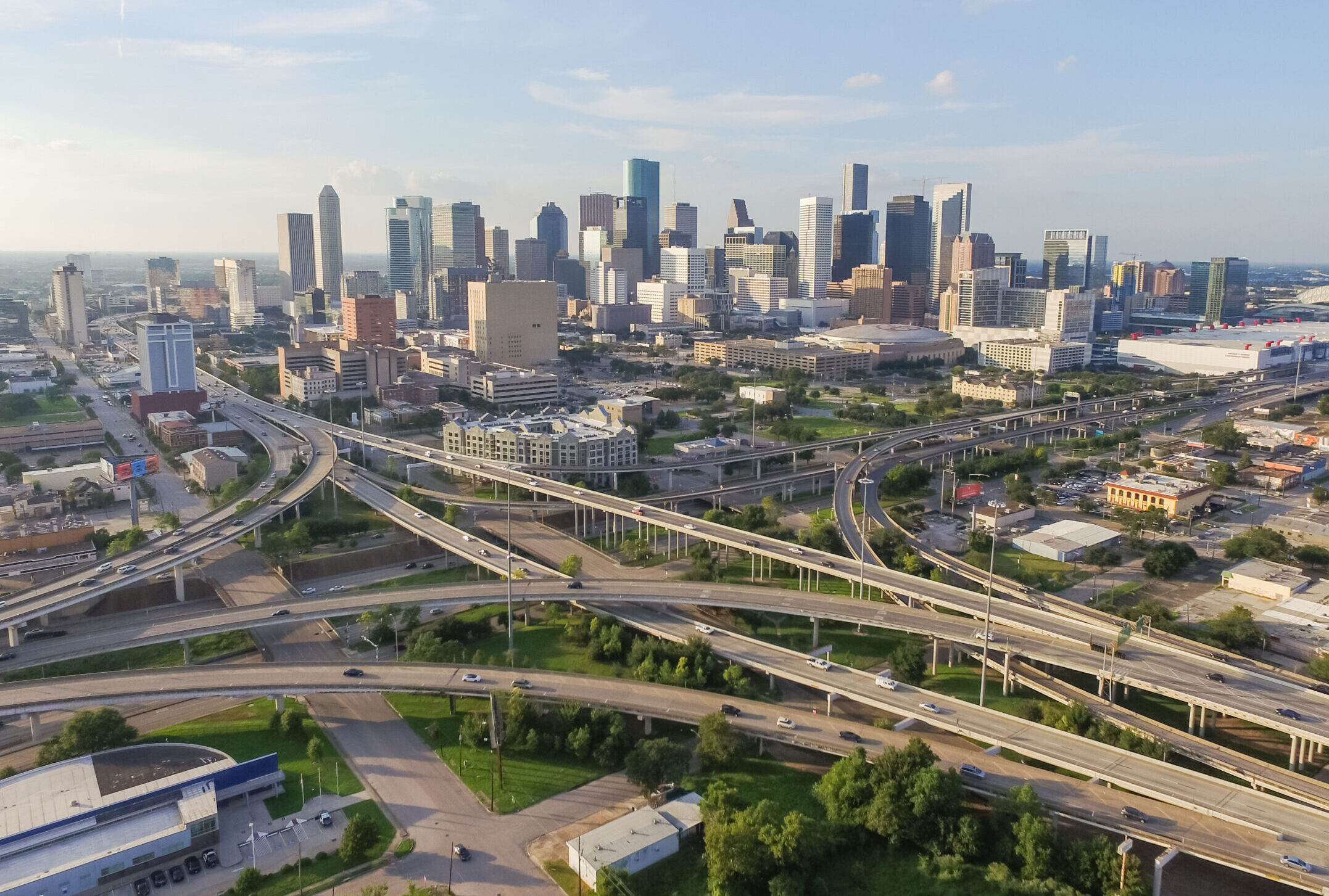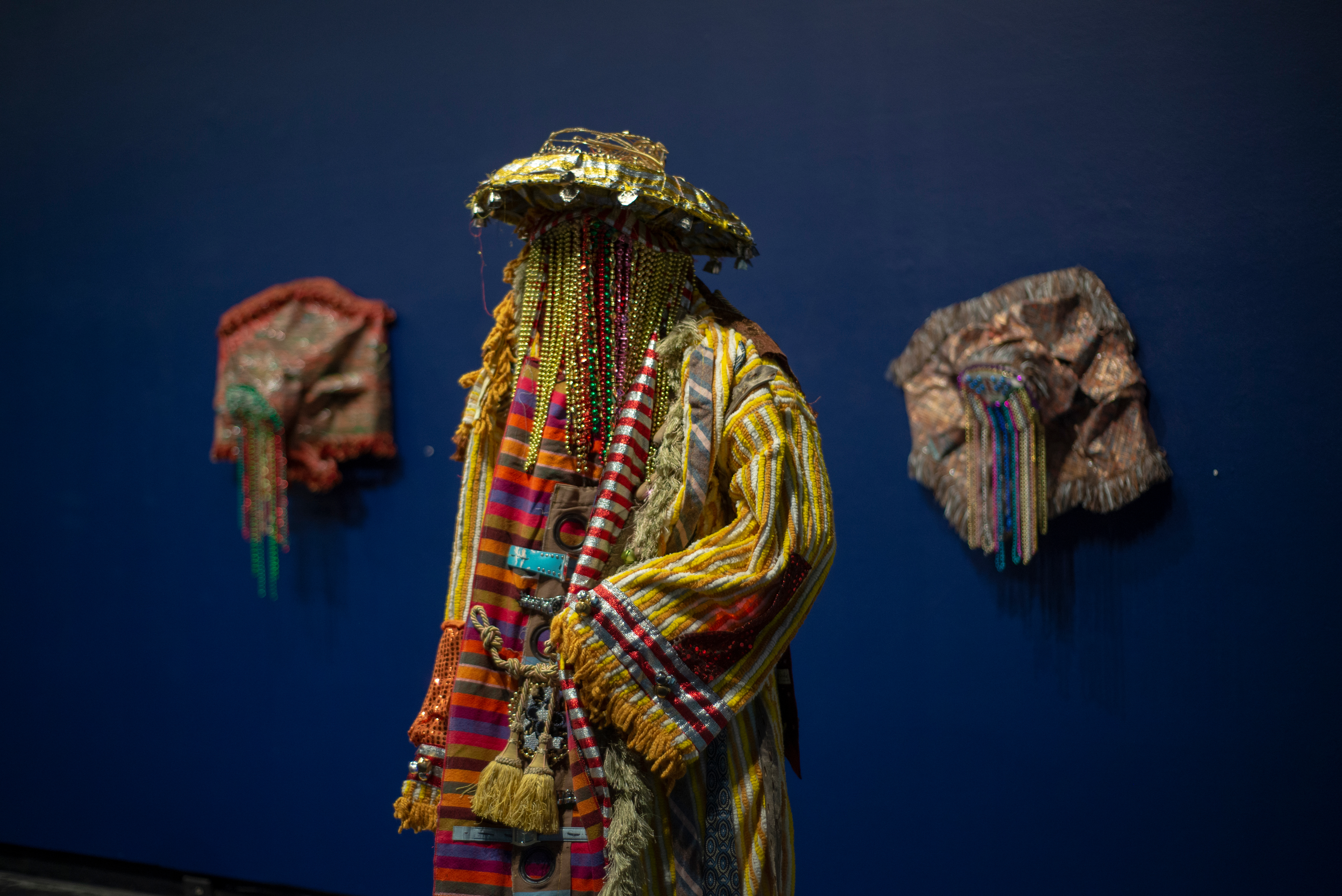
Ancestors in a Strange New Land
In Houston, an exhibit of vibrant, playful Egúngún costumes speaks to Nigerian tradition and migration.
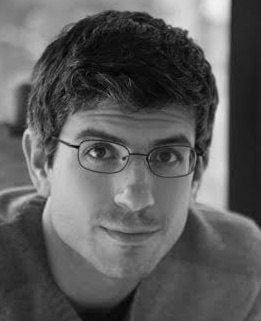
Visitors to “Ara Oru Kinkin (Masquerades Mythology),” the current show by the artist Akirash at Lawndale Center for the Arts in Houston, will find themselves confronted by a wealth of visual information and very little in the way of curatorial guidance. The laissez-faire design of the exhibit, which is on display until March 3, has some positives. Those of us who have not lived in or studied the West African region of Yorubaland or its diaspora cultures will have the feeling of being thrown into a rich but confusing aesthetic experience — an energetic religious-folkloric festival, complete with whirling full-body costumes, drums, ornaments both solemn and humorous, dancing and ritual drama. We’re informed by a few paragraphs of exhibition text that these materials represent the Egúngún masquerades of southwest Nigeria, wherein followers of traditional religion believe that ancestors are reincarnated in colorful costumes to sing, bless harvests and pray for the sick and childless.
Much of the floor plan is taken up by magnificent, life-sized costumes, each face veiled so that the forms seem to contain life even when not worn by a human festival participant. One ancestor ensemble is surrounded by plastic fruits and leaves; another by baby dolls. One is strewn with clocks; another with neckties. Everywhere are Mardi Gras-like beads, tiny glued-on mirrors, tassels and sparkly textiles. At the center of the room is a large, netted tent-like structure with rugs and pillows on the floor, and projected on the wall is a triptych video of the costumes being sewn and later worn in staged performances around Texas.
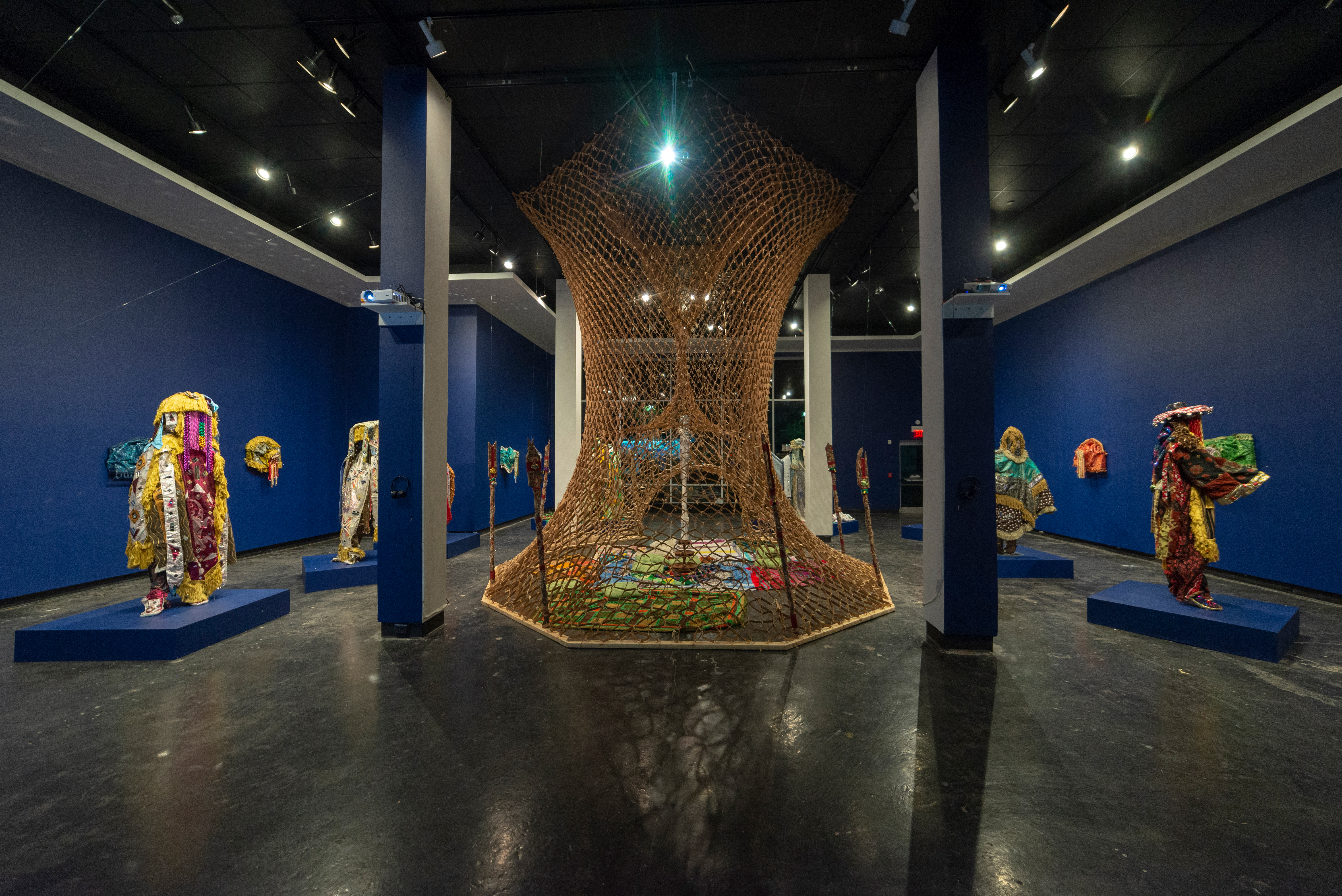
Visitors to the exhibition are compelled to spend time inhabiting Akirash’s world, taking in its texture, before applying analysis, because most of us will have few tools at our disposal. This immersion can be powerful, sparking the imagination. On the other hand, the lack of explanatory text leaves many questions unanswered. Is Akirash’s work the sort of traditional folk art that might be welcome in a small-town public masquerade, or has he added layers of commentary, critique or personal expression?
For assistance, I consulted a source unavailable to the typical exhibition visitor: Akirash himself, full name Olaniyi Rasheed Akindiya, a Nigerian who now lives between Lagos and Pflugerville. He told me via email that he comes from family of Egúngún practitioners, and he calls his art an “appropriation” of tradition, but one deeply concerned with questions of authenticity. He was inspired to create this body of work while at an artist residency in Brazil, where he was invited to attend a local Egúngún masquerade put on by a diaspora Yoruba community. He was troubled by the performance, which took place indoors and at night — both departures from the tradition he knew from Nigeria. He set out to build costumes more authentic to his family’s Egúngún tradition. “It is a legacy I feel obligated to share, not only with my children, but with all the migrant children of the world in the different countries they now call home, whose connection to their traditional home cultures is now tenuous at best,” he writes.
Along the way, however, his creative side got the better of him, and he began incorporating less-traditional materials in his Egúngún ensembles. He brought in textiles from around the globe, including from Australian aboriginal, New Zealand Maori and U.S. Pueblo cultures. Working to create his public performances — a new one is planned for Houston on February 9, beginning at Lawndale and terminating at the nearby Cullen Sculpture Garden — Akirash also considered the presentation styles of other costumed traditions around the world, including Halloween in the United States, Día de Los Muertos in Mexico, and Junkanoo in the Bahamas. He sees his project as a meditation on the way traditions rooted in the human search for meaning and connection evolve against a background of diaspora and social change.
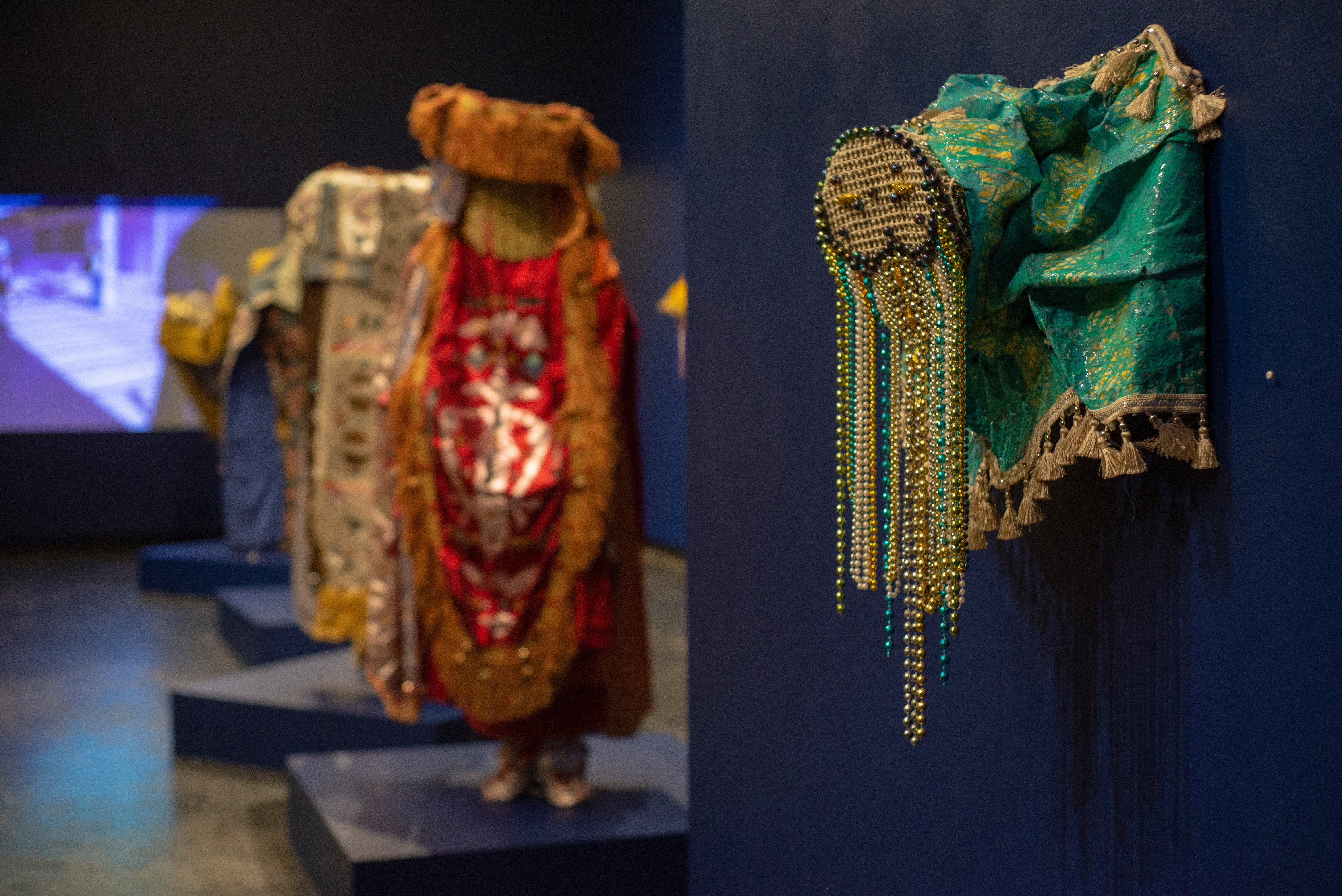
“Masquerade Mythologies” will mean different things to different audiences: a taste of home, an opportunity to reconnect with lost heritage, an inspiration for Afrocentric aesthetics, an exposure to an unfamiliar culture, a reflection on migration and globalization. The show will be especially potent, of course, for Houston’s sizable West African immigrant population, typically ignored by the museum scene. Other groups, however, could have used a bit more help from the venue in situating themselves in relation to the work.
In the videos, it is both jarring and fascinating to watch Akirash’s performances play out in contexts that look utterly Texan. Here he dances alone, in costume, in front of a suburban-looking sandstone brick building; there he is with a group of fellow performers, a mix of races and genders, enacting a solemn ritual in plain white clothing suggestive of burial wrappings. Of all the things that the eye finds irresistible about Akirash’s elaborate, dazzling, symbol- and mythology-laden handiwork, perhaps the most striking is the question of how these ancestors came to be incarnated here in Texas.

